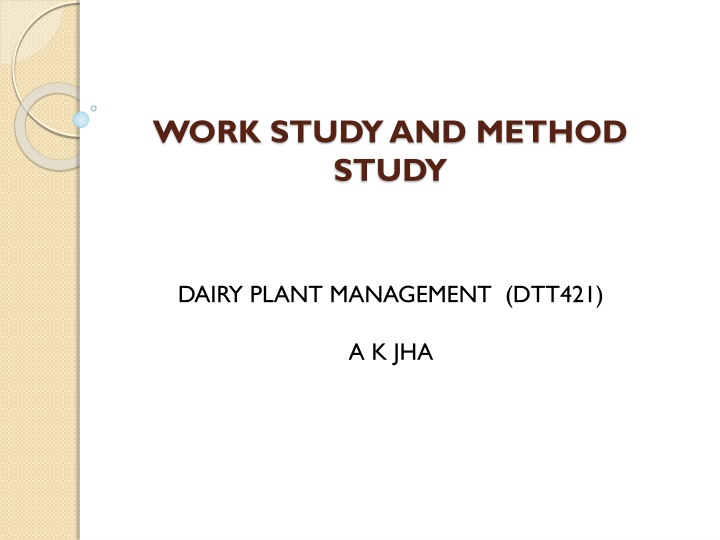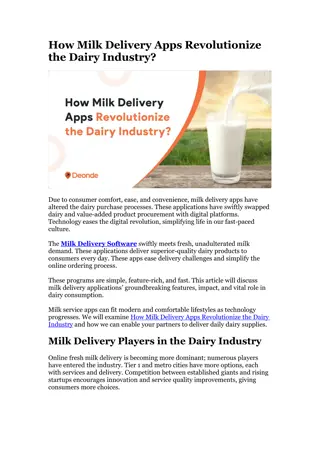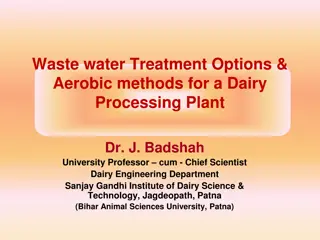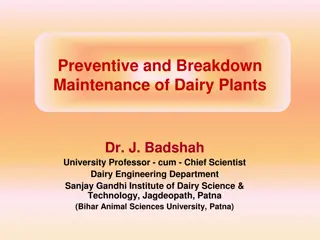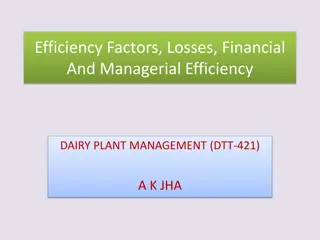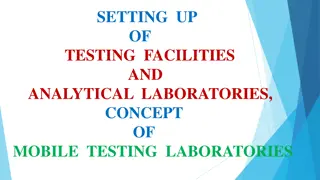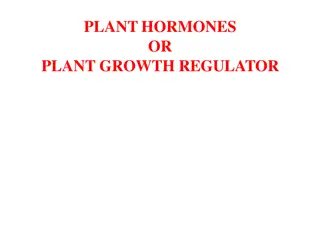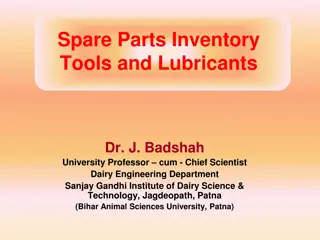Techniques for Improving Productivity in Dairy Plant Management
Work study and method study are essential techniques for enhancing productivity in dairy plant management. Work study involves method study and work measurement to analyze work processes, develop efficient methods, and determine standard times. Method study focuses on recording and evaluating work methods to find easier and cost-effective approaches. By implementing work study and work measurement, inefficiencies can be identified and eliminated, leading to increased output without the need for additional investments.
Download Presentation

Please find below an Image/Link to download the presentation.
The content on the website is provided AS IS for your information and personal use only. It may not be sold, licensed, or shared on other websites without obtaining consent from the author.If you encounter any issues during the download, it is possible that the publisher has removed the file from their server.
You are allowed to download the files provided on this website for personal or commercial use, subject to the condition that they are used lawfully. All files are the property of their respective owners.
The content on the website is provided AS IS for your information and personal use only. It may not be sold, licensed, or shared on other websites without obtaining consent from the author.
E N D
Presentation Transcript
WORK STUDY AND METHOD STUDY DAIRY PLANT MANAGEMENT (DTT421) A K JHA
Work Study Work study is one of the techniques for improving the productivity It is a generic term for the techniques of method study and work measurement. Method study is the technique of systematic recording and critical estimation of existing and proposed ways of doing work and developing an easier and economical method.
Work Study Work study is the term used in Great Britain while in the USA it is called Time and Motion Study. Both concerned with discovering the best ways of doing jobs and with establishing time and output standards based upon such methods. The time and motion study (or time-motion study) is a business efficiency technique that combines the Time Study work of Frederick Winslow Taylor with the Motion Study work of Frank and Lillian Gilbreth. It is a major part of scientific management (Taylorism). Time study developed in the direction of establishing standard times Motion study evolved into a technique for improving work methods.
Work Study Work study is a combination of two groups of techniques, method study and work measurement, which are used to examine people's work and indicate the factors which affect efficiency. Work study is normally used in an attempt to increase output from given resources with little or no additional capital investment. This is achieved by systematically analysing existing operations, processes and work methods.
Work Study The basic procedure of work study is as follows: Select the job or process to be studied. Record everything that happens during observation. Examine the recorded facts critically Develop the most economic methods, taking into account all the circumstances. Measure the amount of work involved in the method used and calculate a standard time for doing it. Define the new method and the related time. Install the new method and time as agreed standard practice. Maintain the new standard practice by proper control procedures.
Work Measurement Work measurement establishes the time a qualified worker needs to carry out a specified job at a defined level of performance. Standard Time: Amount of time it should take a qualified worker to complete a specific task, working at a sustainable rate, using given methods, tools and equipment, raw material and workplace arrangements. Work measurement helps in investigating, reducing and subsequently eliminating ineffective time, during which useful work is not being performed.
Method Analysis Job design often begins with a methods analysis of an overall operation. It might be called as a macro-view of the job. It then moves from the general to specific details of the job, arrangement of the workplace and movements of the worker. It can be a good source of productivity enhancement. Method Study: Whereas method study helps us eliminate unnecessary movement. concentrating on
Method Study Method study is the systematic recording and critical examination of existing and proposed ways of doing work in order to develop and apply easier and more effective methods and to reduce costs. It is used to improve processes and procedures, plant layout, design of plant and equipment; to reduce human effort and fatigue, use of materials, machines and manpower, and to develop better physical and working environments.
Drivers of Method Analysis Changes in tools and equipment. Changes in product design, or new products. Changes in materials or procedures. Government regulations. Other factors (e.g. Accidents, quality problems)
Application of Method Analysis Methods analysis is done both for existing jobs and new jobs. For an existing job, the analyst observe the job as it currently being done and then devise improvements. For a new job, the analyst rely on a description of the job and an ability to visualize the operation in advance.
Procedure in method analysis 1. Identify operation to be studied and collect all essential facts regarding tools, equipment, materials, etc. 2. For existing job, discuss the job with operator and supervisor to get their views/ inputs. 3. Study and document the present method of an existing job with the help of process chart. 4. Analyze the job. 5. Propose new methods. 6. Install the new method. 7. Follow up installation to ensure improvement.
